Volkswagen Tiguan Review
Looking for a big VW Golf with a high driving position? The Volkswagen Tiguan is for you
Strengths & weaknesses
- Feels like a tall VW Golf
- Comfortable and quiet
- Large and flexible interior space
- Engines aren't particularly economical
- Expensive
- Cheaper models look unimpressive
Think of the Tiguan as a stretched Volkswagen Golf on stilts. Both cars share the same mechanical parts, both are roughly the same length and width and both have similar interiors, with plenty of space for a family of four.
Just as importantly, both cars have the same sense and image of quality. Like a set of John Lewis saucepans, the Tiguan feels built to last. With plenty of options to make your Tiguan feel suitable high-tech, luxurious or more stylish, you don’t have to feel ashamed at shunning more expensive alternatives such as the Land Rover Discovery Sport, BMW X3 and Mercedes GLC.
In that respect, the Tiguan is good value, but like most crossovers that combine the comfort and fuel economy of a family cars with the higher driving position of off-road vehicles, the Tiguan is considerably more expensive than the car that it's based on - you can have an equivalent new Golf for £6,000 less.
Slide the rear seats fully forward and legroom for rear passengers becomes cramped but the boot space increases to an enormous 615 litres. That’s 235 litres more than the Golf hatchback and 10 litres larger than the Golf estate.
It’s also impressive compared with rival crossovers - at least 100 litres more than the boot in a Nissan Qashqai, Seat Ateca, Mazda CX-5 or Ford Kuga, though the Volkswagen is pricier than these alternatives.
The extra space goes some way to justifying the car’s price, which starts at just over £24,000 before any Volkswagen Tiguan discounts are applied. That’s steep when you can have a Renault Kadjar for just over £20,000.
Some of that difference is cancelled out by the Tiguan's excellent used values, which makes it cheaper to own or finance, as it loses value more slowly than rivals. However, the starting price also excludes much of the equipment that makes the Tiguan feel a cut above the competition, such as a digital speedometer display, the latest dashboard software and luxurious seats. The Tiguan is also a little less economical than rivals.
So, if you want the Tiguan over rivals, you will have to pay for it, though the finance options are better value than you may expect. With around 90% of new cars financed and a growing amount of used cars paid for monthly, this means that if you've got your heart set on the VW, it shouldn't cost too much extra to get it, compared with the competition.
Every Tiguan is comfortable on the road because the car has been designed to soak up bumps and remain stable in corners without too much leaning. You can make the ride even smoother by choosing the optional dynamic chassis control. This adds high-tech suspension that continually adjusts to suit the road conditions and works well, offering a similar ride to the Peugeot 3008 and Mercedes GLC.
The focus on comfort means that the Tiguan can be dull to drive. It will glide along all types of roads with little drama, but doesn’t steer with the same agility as a Mazda CX-5, Seat Ateca or BMW X3: you are always aware that you are behind the wheel of a tall, heavy car - even compared with the more affordable Golf.
Four-wheel drive is available across the range, which will help get the car moving in slippery conditions, but won't allow you to follow a proper off-road car into the wilderness. Most Tiguans come with self-sealing tyres, contaning a goo that is meant to seal small punctures instantly. However, large punctures will leave you stranded unless you buy a spare wheel.
More expensive models are pricey, bringing them into direct competition with the Land Rover Discovery Sport, which also has a smooth ride but offers the option of seven seats, and better performance off-road. The nimble and sporty BMW X3 is also the same price as high-specification Tiguans, which cost around £40,000.
As well as being able to juggle rear legroom and boot space by sliding the rear seats, you can also opt for more flexible Tiguan options, including a Pet pack, with a grille between the rear seats and boot, plus protection for the carpet and rear, and roof racks for bicycles or luggage. A seven-seat version, called the Volkswagen Tiguan Allspace, is also available and if you want the most practical Tiguan, this is it. The rear seats are not the most usable, however, and are most suitable for children.
The Tiguan does come with a high level of standard safety equipment, including airbags in the front and rear, plus an automatic emergency braking system, which has helped the car to gain the maximum five-star rating in crash tests carried out by the independent Euro NCAP organisation.
Key facts
| Warranty | Three years / 60,000 miles |
|---|---|
| Boot size | 615 litres (rear seats pushed forward) |
| Width | 1839mm |
| Length | 4486mm |
| Height | 1654mm |
| Tax | £160 to £500 in first year, £145 thereafter Pre-April 2017: £115 to £220 per year |
Understanding Volkswagen Tiguan names
Engine 2.0 TDI BMT 150
Diesel Volkswagen Tiguans are labelled TDI or BiTDI, while petrol versions have TSI badges. All models have modifications to boost efficiency, which Volkswagen calls BlueMotion Technology, or BMT. The size of the engine is provided in litres (here it's 2-litres), but some are available with different power outputs, so the engine's horsepower is often shown. This may be written as PS.
Trim level SE Navigation
The trim level affects the amount of equipment that comes as standard. Tiguan S models are the cheapest and least well-equipped, followed by SE, SE Nav, SEL and then R-Line at the top of the range.
Driven wheels 4Motion
Four-wheel drive Tiguans are known as 4Motion models.
Gearbox DSG
Volkswagen calls its automatic gearbox DSG.
Volkswagen Tiguan Engines
Petrol 1.4 TSI (125PS), 1.4 TSI (150PS), 2.0 TSI Diesel 2.0 TDI (115PS), 2.0 TDI (150PS), 2.0 TDI (190PS), 2.0 BiTDI
When you’re deciding what engine to choose for your Tiguan, there are plenty of options to consider. As well as looking at price, performance and fuel economy, you’ll also need to think about whether you want four-wheel drive or an automatic gearbox: these are only available with certain engines.
You can’t have either if you opt for the least powerful 2-litre diesel engine with 115 horsepower (hp). It’s slow to accelerate and you don’t get much standard equipment because it’s only available in entry-level S trim.
Most Tiguan buyers will opt for the 150hp diesel engine, which is still not particularly fast, but doesn’t feel underpowered. It’s ideal for family transport. You can have it with every trim level in the range, and it’s particularly smooth with the automatic gearbox, even though it can take a second or two to react when you push the accelerator hard.
Both of these diesel engines have identical official fuel economy figures of 60.1mpg (although opting for larger wheels reduces this slightly).
These diesel engines have carbon dioxide emissions of 123g/km CO2, which is high compared with the likes of the Nissan Qashqai and Peugeot 3008, and will mean that you pay a higher rate of company car tax.
There are more powerful diesel options available too: a 190hp version, which feels a more energetic and responsive, but which returns just under 40mpg in real-world driving.
The fastest diesel is considerably quicker than the rest - and has a price to match. The 240hp engine will accelerate from 0-62mph in 6.5sec, which is similar to a larger and much more expensive Jaguar F-Pace.
Most Tiguan buyers opt for a diesel model because they are more efficient. As with all modern cars, they have the latest Euro 6 emissions technology.
It does mean that diesel Tiguans come with a tank for AdBlue. This is an additive that is injected into the exhaust and needs refilling every 3,000 to 4,000 miles on average. If it’s not done, the car will eventually fail to start.
There’s a limited choice of petrol-powered Tiguans. The range starts with the slow 1.4-litre 125 hp engine, which has an official mpg of 47.1mpg, but the Equa Index suggests you should expect closer to 38mpg in normal driving, which is a smaller difference than with many rivals.
The more powerful version of the 1.4-litre engine has 150hp, which is plenty to power the Tiguan around British roads if you’re not looking for it to provide any exciting performance.
Mind you, the most powerful petrol engine doesn’t really offer fireworks either. The 2-litre, 180hp motor is expensive because it’s only available with four-wheel drive and in higher specifications. If the combination is what you’re looking for, then the car is worth considering, but this Tiguan isn’t so fast that it’s worth buying for the performance alone. Real-world fuel economy of around 34mpg isn’t far off the official figure of just under 40mpg.
|
Fuel |
Official fuel economy |
Power |
Acceleration (0-62mph) |
Top speed |
|
|
1.4 TSI 125PS |
Petrol |
47.1mpg |
125hp |
10.5sec |
118mph |
|
1.4 TSI 150PS |
Petrol |
48.7 - 49.6mpg |
150hp |
9.2sec |
125mph |
|
2.0 TSI |
Petrol |
38.2 - 39.8mpg |
180hp |
7.7sec |
130mph |
|
2.0 TDI 115PS |
Diesel |
60.1mpg |
115hp |
10.9sec |
115mph |
|
2.0 TDI 150PS |
Diesel |
57.6 - 60.1mpg |
150hp |
9.3sec |
127mph |
|
2.0 TDI 190PS |
Diesel |
49.6mpg |
190hp |
7.9sec |
131mph |
|
2.0 BiTDI |
Diesel |
44.1mpg |
240hp |
6.5sec |
142mph |
Volkswagen Tiguan Trims
S, SE, SE Navigation, SEL, R-Line
There are plenty of ways to personalise a Tiguan, starting with a choice of trim levels, which offer different amounts of standard equipment and a variety of engine choices.
You can combine these with individual options - so you could add a top-of-the-range sound system to one of the cheaper Tiguans, for example.
One option worth choosing if affordable is the Dynamic Chassis Control: an advanced suspension that automatically adjusts to the road surface and makes the ride smoother. It also includes different profiles to make the car feel sportier or more comfortable.
All Tiguans have electric windows and mirrors, along with split-folding rear seats, allowing you to increase boot space and still keep up to two seats in the back.
They also come with a high level of standard safety equipment, including airbags at the front and down the side, an automatic emergency braking system and an alert that sounds if you drift out of your lane. There are two sets of Isofix mounts in the back for safely mounting child seats and the option of four-wheel drive across the range.
The very cheapest Tiguans come in S trim, which include 17in alloy wheels, roof rails, a cooled glovebox, leather steering wheel, air conditioning and an automatic dimming rear view mirror.
There’s an 8in dashboard touchscreen with digital radio and Bluetooth for connecting a phone wirelessly (you can connect two phones at the same time) but there’s no sat-nav. You also have few styling enhancements outside, which makes the car look anonymous.
Picking SE trim adds around £2,700 to the car’s list price but brings with it some useful additions for a large car, including parking sensors at the front and back, three-zone climate control and side mirrors that adjust to show the kerb when you put the car into reverse.
You also get larger 18in alloy wheels, folding tables on the back of the front seats, a ‘ski-hatch’ between the two rear seats for loading long objects through the boot, which doubles as two cupholders, as well as cruise control, a speed limiter and entertainment control buttons on the steering wheel. There’s Apple CarPlay, Android Auto and MirrorLink software, which make it easier to control certain apps on your phone using the car’s touchscreen.
Tinted rear windows, front fog lights and chrome around the windows and on the roof rails make Tiguan SE models look a bit more distinctive.
SE Navigation cars include all of the above, plus European sat-nav with a three-year subscription to traffic data and a display showing the speed limit of the road you’re on, for which Volkswagen charges you a hefty £725.
SEL cars have more of a hi-tech feel, with adaptive cruise control that can keep a set distance from the car in front and Volkswagen’s Active Info Display, which is a 12.3in screen behind the steering wheel, replacing the speedometer and rev-counter dials. You can customise the display to show a big sat-nav map and a small speedometer, for example.
You also get Dynamic Light Assist, allowing you to keep main beam on during night driving. The car will automatically screen part of the light beam to avoid dazzling other drivers, while maintaining maximum visibility elsewhere on the road.
Other extras include a panoramic sunroof and heated front seats with massage function and 14-way adjustment on the driver’s side. Outside, the wheel size is increased to 19in and there are more silver highlights and brighter LED headlights.
At the top of the range is the Tiguan R Line. This is ooks chunkier and more solid, thanks to enormous 20in wheels and body-coloured bumpers and side panels.
Inside, silver panels are fitted to the dashboard and doors but considering the list price is well over £30,000, you might well feel disgruntled at having to pay more for leather seats.
Volkswagen Tiguan Reliability and warranty
In America, the Tiguan is being offered with a six-year warranty, but VW is only offering British buyers three years, up to a maximum of 60,000 miles.
Other manufacturers give more reassurance. Renault offers four years on the Kadjar, Toyota provides five years with its C-HR or RAV4, while the Kia Sportage comes with seven years of cover.
As a relatively new car, reliability data for the Tiguan has yet to filter through, but Volkswagen’s track record is considerably worse than the company’s image would suggest: last year, the company was ranked 24 out of 32 manufacturers for reliability in the Auto Express Driver Power ownership survey.
Other Editions
.jpg?width=400&height=225&format=webp)
Tiguan (2008 – 2016)
Like a Waitrose on wheels, a used Tiguan offers plain sailing for middle class mums and dads

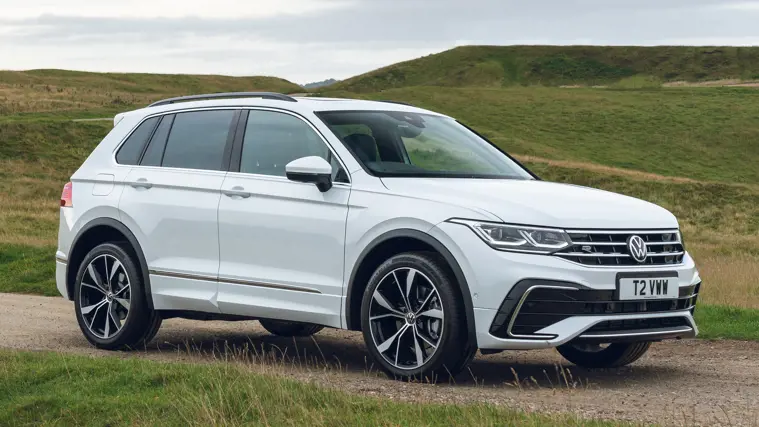
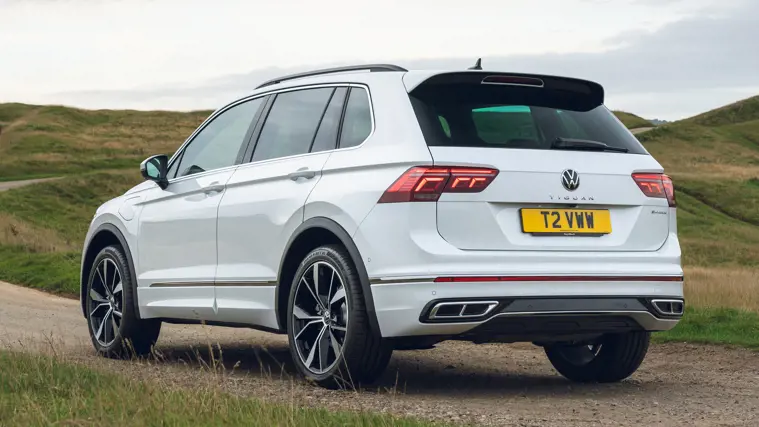
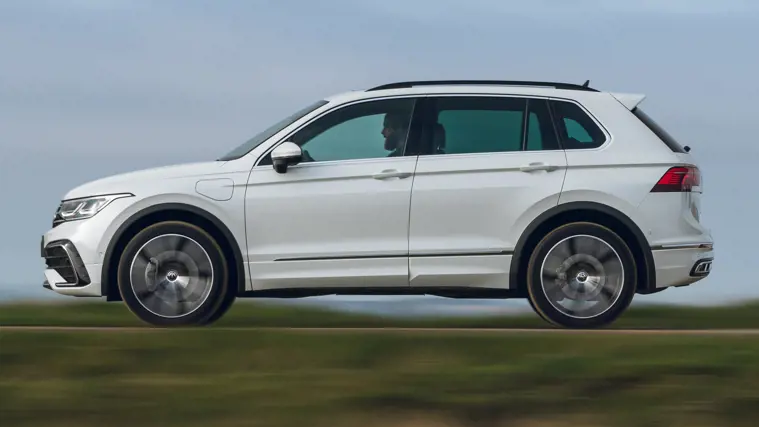
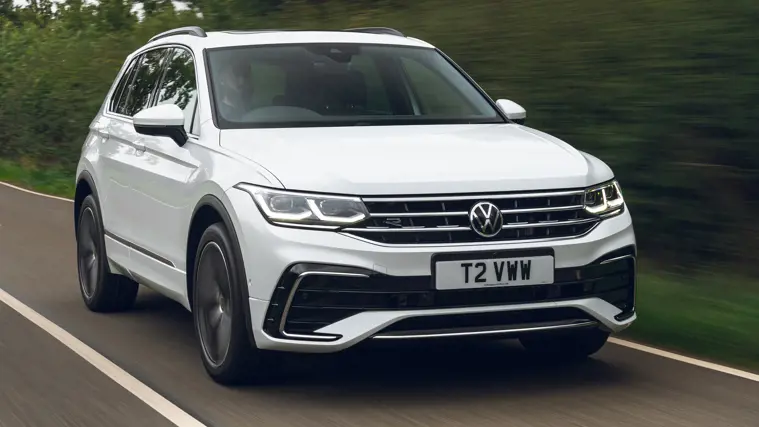
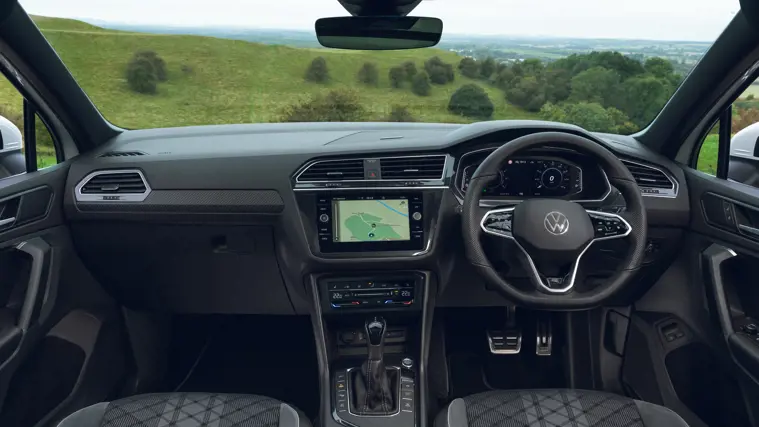
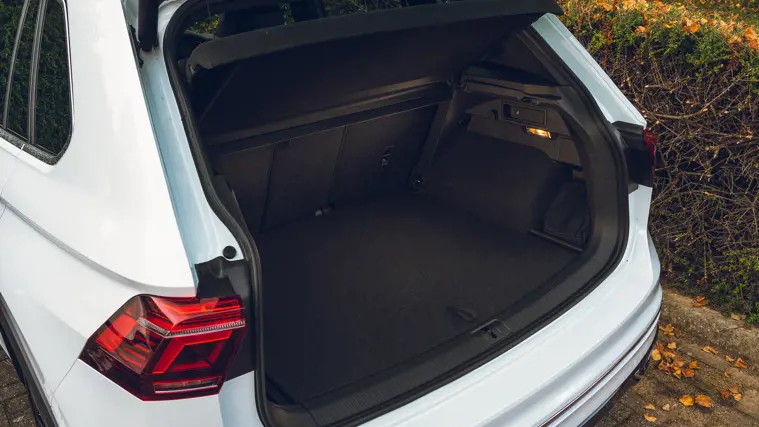
.jpg?width=759&height=427&format=webp)